Aircraft’s Background
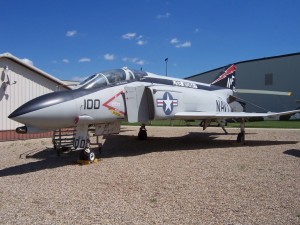 Our F-4 Phantom came to the Prairie Aviation Museum on permanent loan from the National Museum of Naval Aviation, Pensacola, FL in 1997. As the history of this particular aircraft shows, it was assigned to VF-161(Chargers), aboard the aircraft carrier USS Midway (CV-41) in June, 1973.
Our F-4 Phantom came to the Prairie Aviation Museum on permanent loan from the National Museum of Naval Aviation, Pensacola, FL in 1997. As the history of this particular aircraft shows, it was assigned to VF-161(Chargers), aboard the aircraft carrier USS Midway (CV-41) in June, 1973.
Of particular interest, this type aircraft was flown by LDCR Ronald “Mugs” McKeown, with his RIO Jack “Fingers” Ensch from the deck of the USS Midway(CV-41).
Jack is originally from Springfield, IL, and graduated from Illinois State University.
Jack is a Life Time![]() member of the Museum. Jack was also a POW for seven months.
member of the Museum. Jack was also a POW for seven months.
![]() These two Naval Aviators are one of only three Navy F-4 Phantom aircrews credited with twin shoot downs of MiGs in a dogfight during the Vietnam conflict. Both were awarded the Navy Cross.
These two Naval Aviators are one of only three Navy F-4 Phantom aircrews credited with twin shoot downs of MiGs in a dogfight during the Vietnam conflict. Both were awarded the Navy Cross.
Shortly after the MIG dogfight, “Mugs” was assigned to report as one of the first Commanding Officers of the Navy’s Fighter Weapons School, TopGun. After being released as a POW on March 29, 1973, “Fingers” became “Mugs” Executive Officer at TopGun.
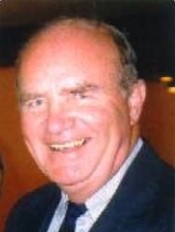

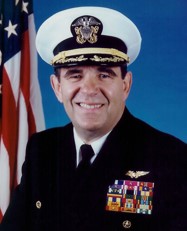
This aircraft, F-4N PHANTOM II, on loan courtesy of:
the National Naval Aviation Museum at Pensacola, Florida.
BUREAU/SERIAL # 150444 NNAM ACCESSION # 1996.331.001
Interactive Display
Click on a colored PIN to display additional information (text, video, recording, images).
This feature is an extra benefit as you walk around the display in our Airpark.
WIFI is provided for your mobile device. A network QR code or name/password is provided at the desk.
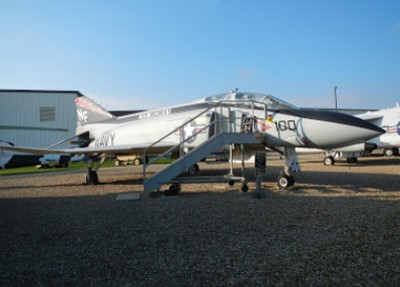











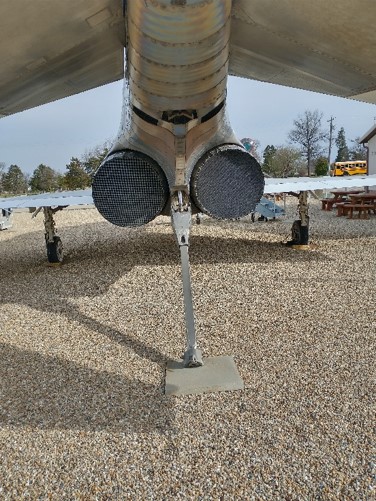


Videos of Interest
Video #1: How Radar Works in the F4 – Run Time (0:24:46)
Video #2: M61 Vulcan Gatling Gun – Run Time (0:03:16)
Video #3: How “Mugs” Flipped the F4 during dog fight – Run Time (0:10:06)
Video #4: Most Feared Fighter Jet of the Vietnam War – F-4 Phantom – Run Time (0:11:38)
Video #5: Jack “Fingers” Ensch and his Wife Cathy Share Their POW Story – Run Time (1:17:43)
Video #6: Jack “Fingers” Ensch Tells POW Story – Run Time (0:06:04)
History
After losing out to the F-8U Crusader in a competitive bid for a Navy Supersonic air-superiority fighter, McDonnell began a company funded project in 1952 to produce a carrier-borne fighter-bomber as a replacement for its F-3H Demon. The outcome was the single-seat, multi-role (i.e., fighter, attack, photo reconnaissance, ECM) AH-1 aircraft with a top-speed of Mach 1.5. After the purchase of two AH-1 prototypes in 1954, Navy specifications were revised to provide for two-crew manning (pilot and Radar Intercept Officer), the Sparrow III (and eventually the Sidewinder) guided missile weapons system, and two GE J-79 engines with 17,000 lbs thrust each for Mach 2+ speed.
The combined thrust of the two engines in after-burner gave it a thrust-to-weight ratio greater than one which meant that the F-4 could climb straight up after take-off. The aircraft designation was then changed from AH-l to F-4H-l and named the “Phantom II”, one of the most famous aircraft in the history of military aviation. Its maiden flight occurred in 1958 with deliveries to Navy and Marine squadrons beginning in 1960.
In the space of about twenty-eight months since its introduction, the F-4 had established 15 world aviation records including altitude (98,500 ft), time-to-climb and speed (Mach 2.59). These factors coupled with a demonstrated capability to lift a load of up to 22,000 lbs. convinced the Air Force to procure the aircraft whose performance qualities were as good or better than their best fighters.
Over 5,000 F-4s were produced of which 1500 were still in use by 1992, and second only to the MiG-21 in numbers produced. It has served the Air Forces of twelve foreign countries and is the only aircraft to be flown concurrently by the Navy and Air Force flight demonstration teams. While Navy F-4’s were replaced by the Grumman F-14 “Tomcat”, the Air Force still retains some for special mission roles.
ROLE: Carrier and land based Fighter/Attack
Crew: Two, Pilot and Radar Intercept Officer
SPECIFICATIONS
Engine: Two 17,000 lb thrust GE J79-GE-8 with afterburners
Wing Span: 38 feet 5 inches
Length: 58 feet 2 inches
Height: 12 feet 3 inches
Empty Weight: 31,853 pounds
Maximum Takeoff Weight: 54,600 pounds
Armament: Up to 16,000 pounds of air-to-air missiles, nuclear or conventional bombs, rockets, air-to-ground missiles or gun pods
PERFORMANCE
Maximum speed: Mach 2+
Range: 1,750 miles (with external tanks)
Service Ceiling: 59,600 feet
Previous Duty Station
F-4N Phantom II
Bureau Number: 150444
Nov-62 | Accepted into inventory at St. Louis |
Dec-62 | USS Enterprise VF-102 |
Aug-63 | NAS Oceana VF-102 |
Jan-64 | NAS Cecil Field VF-31 |
Sep-64 | NAS Key West VF-101 |
Jan-65 | NAS Cecil Field VF-14 |
Jun-65 | NAS Key West VF-101 |
Aug-65 | USS Forrestal VF-103 |
Oct-65 | NAS Key West VF-103 |
Dec-65 | USS Saratoga VF-103 |
Mar-66 | NAS Key West VF-101 |
May-66 | NAS Oceana VF-41 |
Apr-67 | USS Forrestal VF-74 |
Jun-67 | NAS Key West VF-101 |
Dec-67 | MCAS Beaufort VMFA-312 |
Jun-70 | MCAS Cherry Point VMFA-312 |
Oct-70 | MCAS Beaufort H&MS 31 |
Mar-72 | NADEP North Island NARF |
May-73 | NAS Miramar VF-161 |
Jun-73 | USS Midway VF-161 |
Mar-75 | NAS Atsugi VF-161 |
Apr-75 | USS Midway VF-161 |
Jun-75 | NAS Atsugi VF-161 |
Jul-75 | USS Midway VF-161 |
Aug-75 | NAS Atsugi VF-161 |
Jan-76 | USS Midway VF-161 |
Dec-76 | NAS Atsugi VF-161 |
Jan-77 | USS Midway VF-161 |
May-77 | NAS Atsugi VF-161 |
Jun-77 | USS Midway VF-161 |
Aug-77 | USS Coral Sea VF-191 |
Nov-77 | Last known assignment VF-191 |
